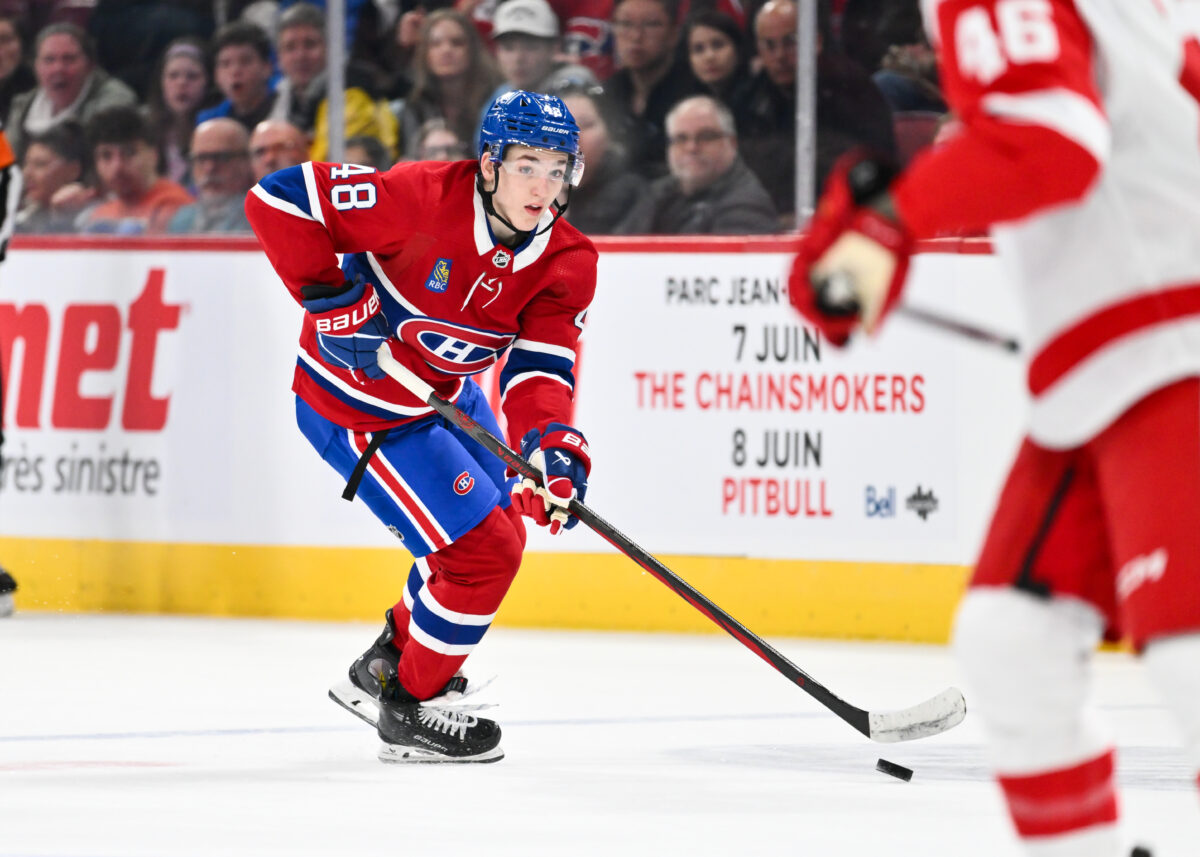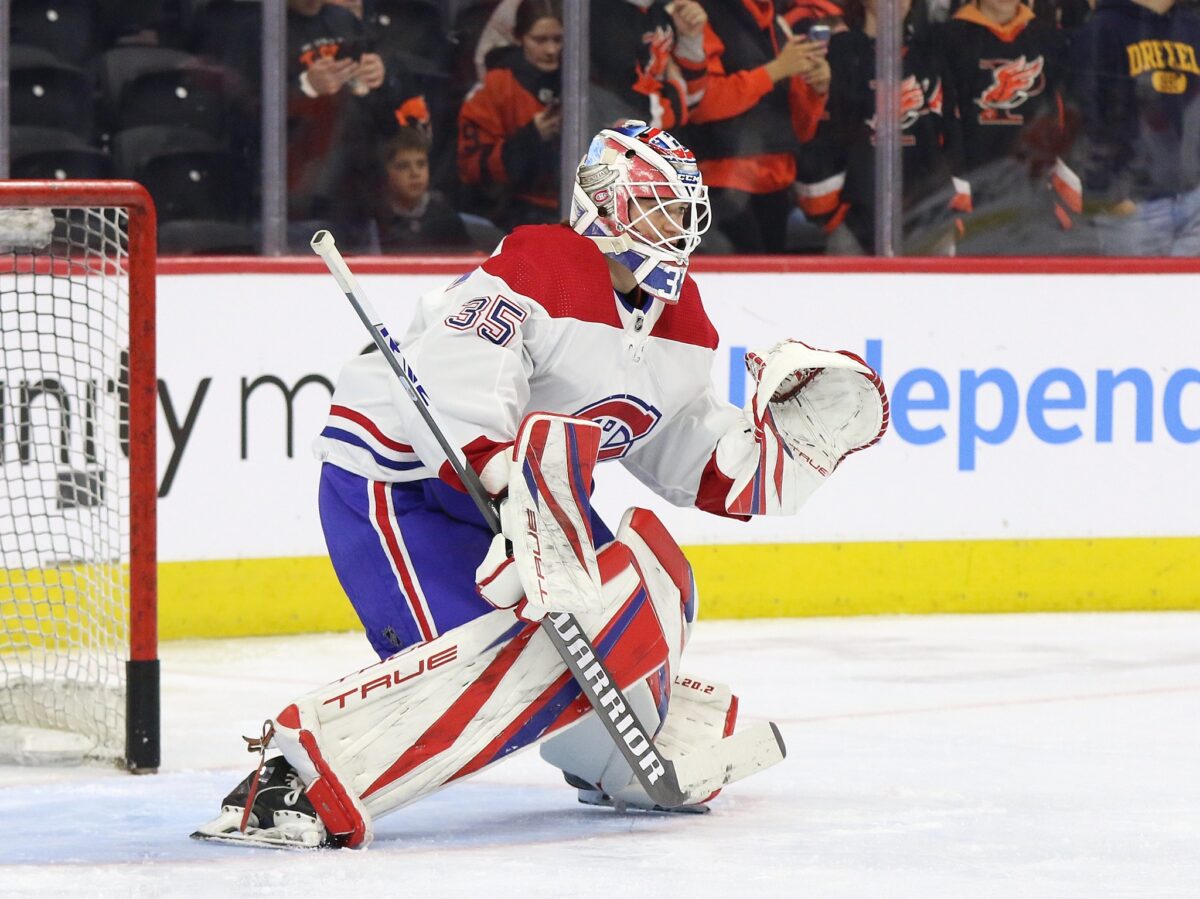Trust the process. That’s been the mantra for Montreal Canadiens fans since the rebuild began in 2022 with the arrival of general manager (GM) Kent Hughes. For the most part, the fans have been patient and seemingly have trusted the process. But this season, there are expectations on the team’s performances, fans want to see a club capable of battling for that last playoff spot, even when none expect the team to actually get into the spring dance.
Related: Canadiens Rebuild is Evolving
There is already a vocal group of fans on social media who are calling for rookie defender Lane Hutson to replace Mike Matheson on the team’s top power-play unit. While that does seem like it would be of benefit, it is still far too early in the season to write off a veteran, but the biggest issue that the Canadiens face is their five-on-five play.
Canadiens Buying In
It may feel counterintuitive to say at this point, but special teams really aren’t an issue so far this season for Montreal. As a matter of fact, they’ve performed far better in this small sample size than they have in the last few seasons. They are sixth in the NHL at a 92.9% kill rate and their power play sits 15th with a 23.5% success rate.

So, it really is the five-on-five play they need to focus on, and mostly on the defensive side of the puck. If Montreal truly wants to be “in the mix” this season, they will need to improve their defensive play to become competitive. Last season they were in the bottom third of the league in nearly every statistical category that measures defence.
“I think the responsibilities go up as you get older, and I expect more from all of them,” St. Louis says. “More is not so much about effort. Effort, to me, is the bare minimum, it’s non-negotiable. It’s about the understanding of our concepts and principles, the application of the collective game. I expect more from all of them in that.”
The players are buying what St. Louis is selling, and he is selling a hybrid system where Montreal goes man-to-man up high and an aggressive zone defence below the top of the circles. The problem? The Canadiens have had a tendency to be hemmed into their own zone for long periods by teams playing more aggressively, using a cycle. This has forced the defence to scramble between the two styles, causing breakdowns in positioning which have opened up passing and shooting lanes. After four games, St. Louis is looking ahead, and is contemplating what changes to the lineup he should make.
Canadiens‘ Defensive Problems
They were near the bottom of the league in all sorts of defensive metrics last season, and it was one of the first things coach Martin St. Louis wanted to address when training camp began. Four games into the season, they remain near the bottom of the NHL statistically. In Corsi For (CF%) they are 32nd with 38.34%, and in shots for percentage (SF%) they are again dead last at 32nd with 39.56%. This points to a team giving up far more shots against than they are taking, but they are also giving up a lot of high-danger scoring chances as well. If it wasn’t for the stellar goaltending of Samuel Montembeault with his .942 save percentage, the team could easily have an 0-4 record to start the season.

The Canadiens’ defensive pairs at five-on-five haven’t faired well. For any pair that has played more than 14 minutes together, which after four games is an average of 3.5 mins – or the equivalent of two shifts, none have a CF% of 50% or above. The most effective pairing with that stat is Justin Barron and Arber Xhekaj who have a 49.02% rate. This could be due to the complementary skill sets, Barron who is highly mobile and likes to move the puck under control quickly, paired with a rugged, more defensive-minded partner. But they are both still making errors due to their youthful inexperience, but also because they are a third pairing, facing the bottom six forwards of the opposition.
Solutions for Montreal
Youth meets experience, and not just in the pairings of a veteran with a defenceman under the age of 22. Youth will meet experience this season as they learn to adapt to the system St. Louis has installed. Because he will not change it to make it easier, as he sees that as sacrificing effective play in the future to partially solve an issue today.
“We don’t have the puck, it’s not time to be simple, it’s time to be calculated together. When we gain the puck, maybe now we’ve got to be simple. Maybe we just go up the wall, or we try to go cross-ice. To me, the simplicity happens more when we have the puck. Instead of trying to hit a home run, let’s just try to get on base here. If you’re asking guys to be simple, I don’t think you’re helping the group.”
So, he isn’t being rigid and not adjusting, but he is placing the focus more on the players engaging physically and making the simpler, higher percentage plays to clear their zone. There will be growing pains, such as a lack of consistency, which is normal when you dress one of the youngest teams on average in the NHL.
The system is still new to the players. Below the circles, they play a passive zone defence, whose goal is to keep the puck cycling to the outside, funneling it to a low point on the half wall below the hash marks where they then change their style of defence. Above the top of the circles, they switch to a man-on-man style, which means they want to create an odd-man situation down low, giving them a man advantage. To capitalize on that, the defence will need to start winning those 50/50 battles along the boards and use the extra man as a pressure relief valve. But that man will need to make a play with the puck quickly, using the simplicity St. Louis spoke about above. Such as a quick up and out pass to a winger in motion, or a bank off the glass and out.
Another hurdle to overcome for the defenders is how to play within the system while also ensuring they clear the slot in front of the net. They gave up a lot of chances in that area last season and so far, this season, they haven’t made it hard enough on teams because there are still too many high-danger chances allowed from that area. Opposing offences have the scouting report, and it’s clear, pressure the defence and the lack of experience means they’re more likely to make the small errors that turn into big opportunities.
The first two seasons of the rebuild saw a focus on improving players individually. This season, while that does continue, the focus now is on building them up within the system of play. They are learning to play within that system as a group, and try to improve in the standings from last season. It is still new to these players, and they are young. It will take time for them to adjust.
